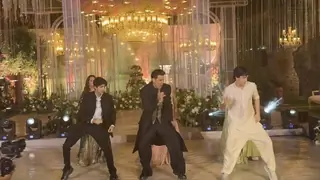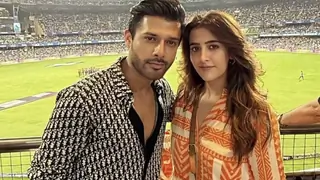Mesmerising Spanish dance performance in capital (Lead)
New Delhi, April 23 (IANS) They thumped their heels, clapped in rhythm and swirled their mantillas to music with distinctly Indian overtones. With their frilled gowns and flowing trains, the flamenco dancers from Spain left audiences here asking for more.
Published: Wednesday,Apr 23, 2008 17:11 PM GMT-06:00
New Delhi, April 23 (IANS) They thumped their heels, clapped in rhythm and swirled their mantillas to music with distinctly Indian overtones. With their frilled gowns and flowing trains, the flamenco dancers from Spain left audiences here asking for more.
The Kamani Auditorium here was Tuesday packed with people who lined the aisles and jostled for space behind the rear stalls to see dancer Maria Pages and her group of six dancers and five musicians perform the gypsy dance from the Andalusian region of southern Spain.
The flamenco dance and music evening was organised by the Indian Council for Cultural Relations and the embassy of Spain.
Flamenco dance has an interesting history, closely linked to India. An exodus of nomadic tribes of acrobats, dancers, singers, entertainers and metal smiths, known as romans or gypsies, from Punjab to southern Spain in the eighth and ninth century contributed to the early form of flamenco dance.
According to experts, traditional flamenco dance has been influenced by traditional Indian dances like bharatnatyam, kathakali, nainipudi and kathak.
The strongest Indian influence can be seen in the music that accompanies flamenco dance. It includes Punjabi folk songs from India along with Arab-Jewish chants.
The modern form of flamenco dance became popular in the 18th century as what came to known as the 'cafe dance' performed by Gypsy dancers. It was officially recognised in the 19th century.
Pages, who has danced for the last 40 years, admitted that flamenco is connected to kathak.
'I know some kathak myself. There is a connection, but flamenco has several other elements, many nuances,' Pages told the media after the programme.
Pages' repertoire began with a male group dance in the haughty military style of Flemish soldiers (of Spanish origin in the 16th century), marked by heavy foot tapping and vigorous body movements.
The group went on to showcase the different flamenco variants like the lament dance, mantilla dance, walking dance, theatrical dance and percussion duets by Pages on her hand rhythm instrument and the boys with walking sticks.
The dancers, who wore shoes with wooden heels, tapped and thumped their walking sticks and feet on the stage to produce a rhythm like drum beats. The tall and imposing Pages, who anchored the compositions, also used the performance to showcase the flamenco fashion of body hugging ballerina gowns with frills in striking colours and flowing trains.
'The flamenco art is very rich and can communicate well with diverse audience. It is a high-energy dance, which speaks of passion, emotions, sentiments and laments. The tapping rhythm represents the beat of human heart, the primary beat music that is the joy of every life,' Pages said.
The dancer said there are two kinds of flamenco - the solo and the group. However, both are popular.
The flamenco combines acoustic guitar (an instrument which originated from the Andalusian region in Spain), local folk melodies, chants, the seductive dance, staccato handclapping, foot tapping and basic percussion sounds like rapping knuckles against a wooden board.
'Andalusia has been a cultural meting pot. The Arabs, Jews, gypsies from India and other European countries, the Greeks and the Moors who came to this culturally rich region in southern Spain have all given something to flamenco. The form that you see today is a distilled variety of all the styles,' Pages said.
The artiste, who is curious about Indian dances, plans to return for more performances and to explore the possibility of fusion choreography with Indian dance forms.
Join Our WhatsApp Channel
Stay updated with the latest news, gossip, and hot discussions. Be a part of our WhatsApp family now!
Join NowYour reaction
 Nice
Nice Great
Great Loved
Loved LOL
LOL OMG
OMG Cry
Cry Fail
Fail
















Post a comment